Kitbashed 1/48 scale
XF8F-1 Bearcat
by Pat Donahue
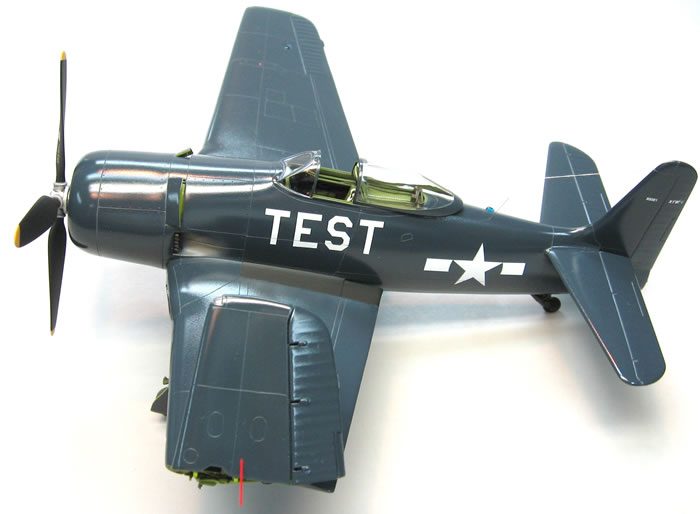 |
Grumman XF8F-1 Bearcat |

Hobby Boss' 1/48 F8F-2 Bearcat is available online from Squadron
 I was looking for a subject that I could do a bit of detailing on but did not want to slice up a kit and do an "airplane autopsy". Basically detail the kit as best that I could but preserve the outline and overall look of the machine. I was looking for a subject that I could do a bit of detailing on but did not want to slice up a kit and do an "airplane autopsy". Basically detail the kit as best that I could but preserve the outline and overall look of the machine.
Enter the F8F Bearcat, I have always liked the plane, and have wanted to build one for a long time. It is a typical Grumman, short, stubby and a very good performance. The last of the real navy air superiority piston engine fighters. It also had a few interesting traits for a modeler. It has a big open cowl, and a weird articulated gear system and the gear wells and center section of the machine are WIDE open. It is easy to see EVERYTHING in there. No doors close up after landing, the cowl has no internal scoops, intakes, etc. to clutter up the view of that big R-2800 engine. So here is a model that I could detail up and everything could be seen without having to cut out panels, or de-cowl the engine.
One problem; there is no decent kit in 1/48, none, zip, nada, so I decided to combine various kits, aftermarket and scratch built stuff to obtain what I wanted: the prototype XF8F-1 with the exposed 10 stack exhaust, no dorsal fin and detail added to my satisfaction. So off I started, modifying, combining, using aftermarket and scratch building. Why all this work into a single engine plane that was only painted one color? Simple, I LIKE the F8F and I knew that I would probably only build one and I don't think Tamiya is going to do one, so I might as well get started.....
I used the Academy kit combined with parts from the Hobby Boss kit, Cutting Edge, Eduard, Lone Star Models and Quickboost and lots of scratch building.

From the prop back to the front cockpit bulkhead was a Cutting Edge F8F-2 back dated to the prototype, the exhaust troughs being modified to the prototype, cowl flap vent depressions removed, early oil cooler exits scratched up along with the 10 stack exhaust.
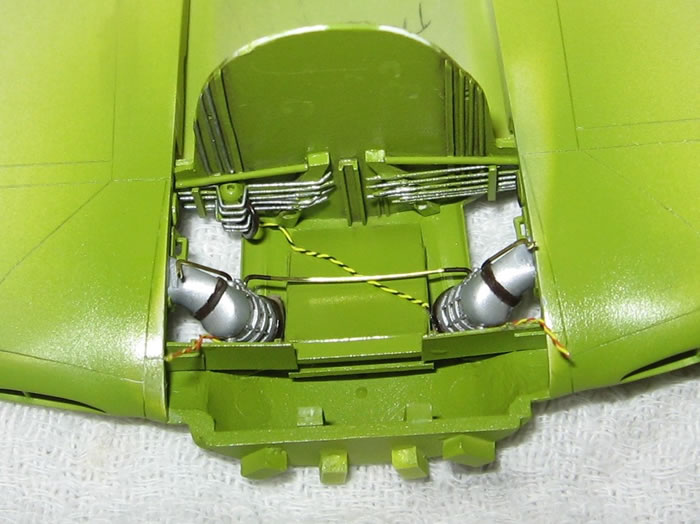
The rear fuselage and wings are Academy back dated to the prototype, with the removal of the dorsal fin, resizing and relocating the wing root intakes, which was a major job, resizing the aileron spring tabs, and removing the dive compressibility flaps.
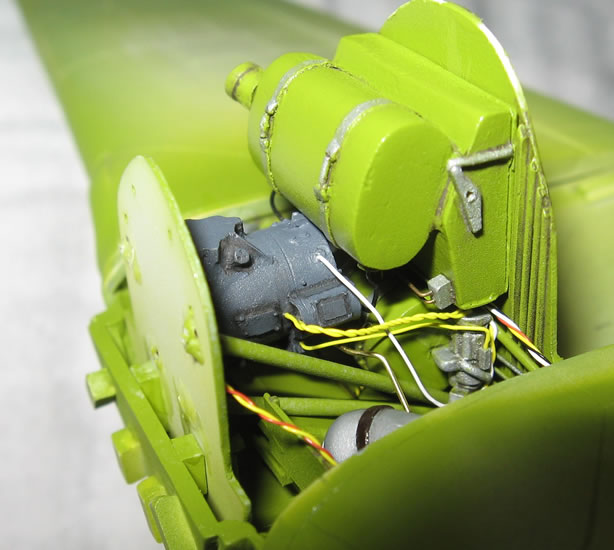
The gun doors were also resized to the prototype configuration with the addition of gun barrels and ammo access doors on the wing bottom.
The wheel wells and internal center section are Eduard, Quickboost, Lone Star donor parts and many scratch built items. This took a good bit of time to line up everything in the proper position and making sure it would all fit into the centersection and wheel well space and that everything would align.
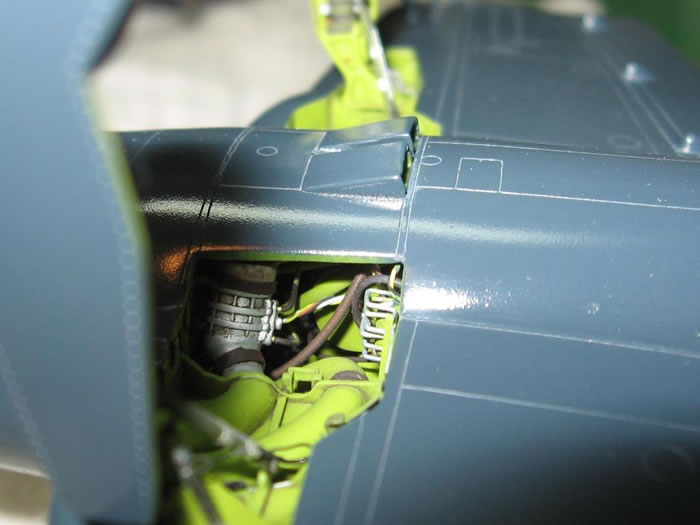
The landing gear are highly modified Hobby Boss items, with scratch built radius rods, hydraulic tubing, gear uplocks, electrical wiring, grease fittings, nuts, clamps, built up gear forks, tow links, etc, along with the prototype brake configuration.
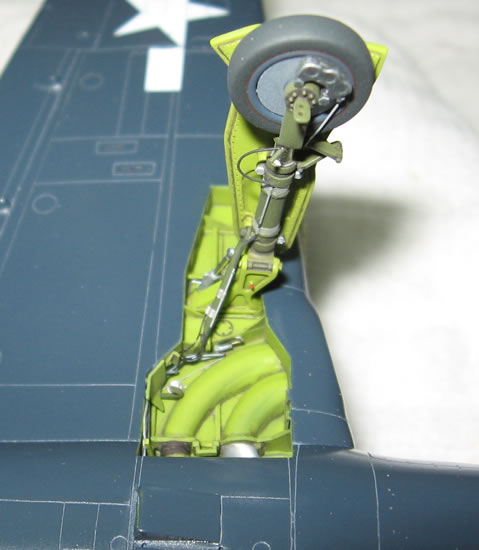
The wing fold is a splice of C/E and Academy parts, the red bar is the manual wing fold leverage bar.
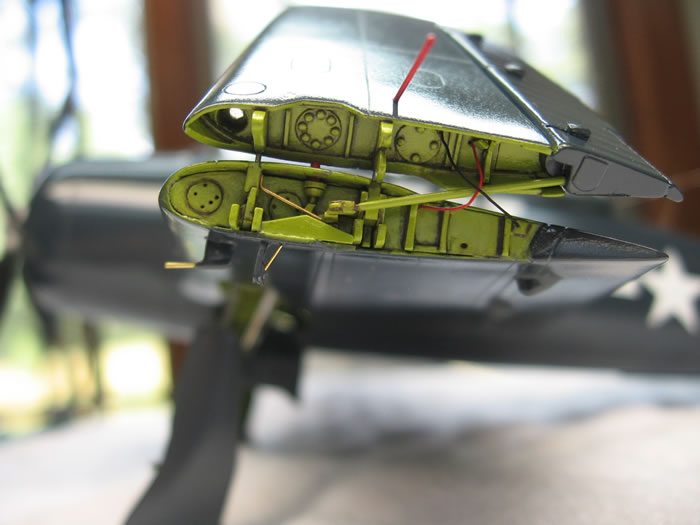
The engine is a Quckboost item with detailing added and the cowl structural formers were added.
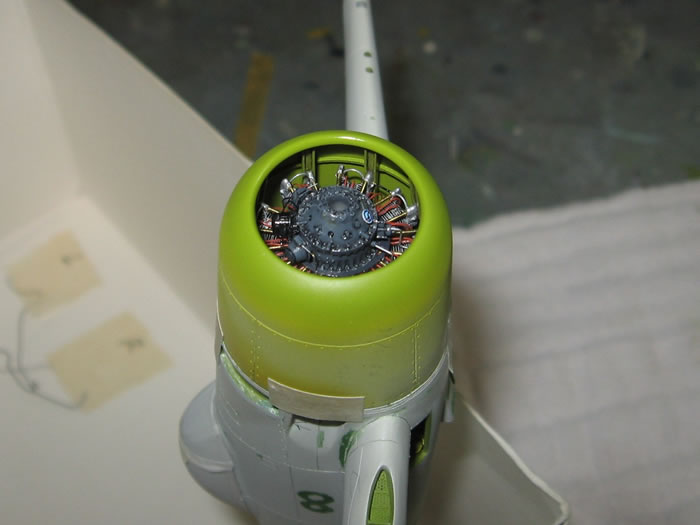
The cockpit interior was a C/E product back dated to the prototype, etc, etc, etc.
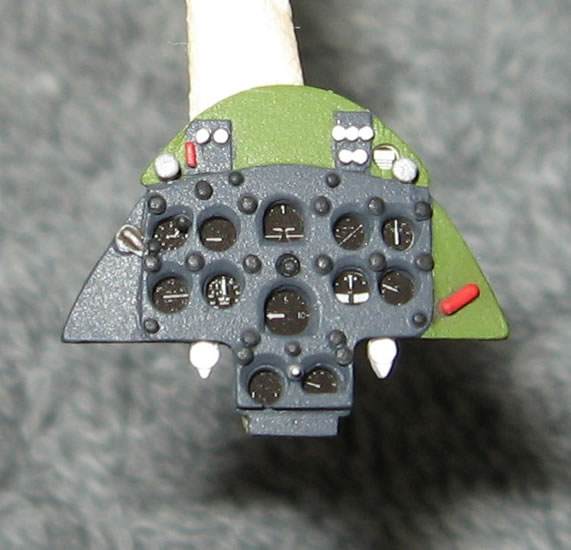
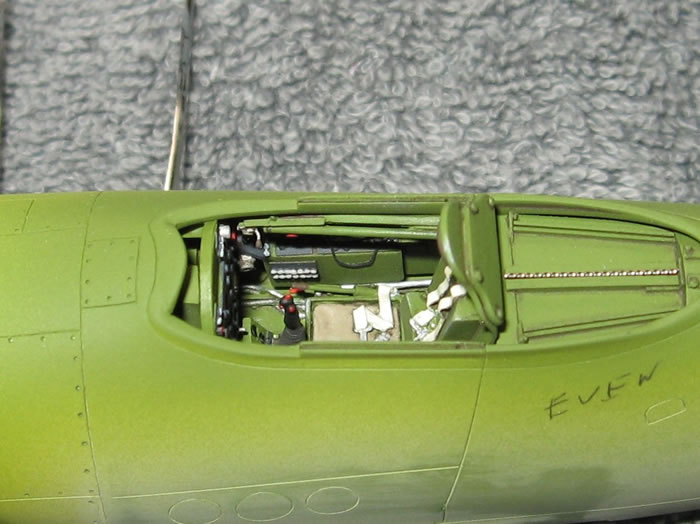
The paint was a home brew of Testor's dark sea blue semi-gloss, over sprayed with Future thinned 50/50 with Mr. Gunze Self Leveling Thinner sprayed in light coats then spit polished (no kidding) with 12000 micro grit and plenty of water and repeated till I got the gloss I wanted.
Grumman photos of the prototype taken on 9/21/44 show a nice gloss but a high gloss Ferrari type finish that looked 5 feet deep would not be appropriate, especially in 1/48 scale. Grumman kept the prototype pretty clean with just some exhaust staining in the troughs, light scuffing in the cockpit and some dust on the tires....
From what I could determine the prototype had chromate internals, and it seems if a part was ready it was bolted on the airframe whether it was painted in primer or dark blue. B&W photos lead me to believe that the gear legs were not painted in blue but that the trunnion and gear leg were 2 different primer colors, so I went with my instinct here, probably to be proved wrong next week when a color photo of the prototype will mystically appear! A F8F mechanic who turned wrenches on the Bearcat in the 50s stated that the interior chromate was a yellow green "chartreuse" looking color. The flash in the pictures tends to make the color look a bit garish and tends to overemphasize the panel line wash in some photos.
This model was helped along in great way by Tommy Thomason who put up with my endless questions about early Bearcats and always came through with an answer. Hopefully he can get some rest now!
Model, Images and Text
Copyright ©
2014 by Pat Donahue
Page Created 25 September, 2014
Last Updated
25 September, 2014
Back to HyperScale Main Page
|
Home
| What's New | Features | Gallery | Reviews | Reference | Resource Guides | Forum |